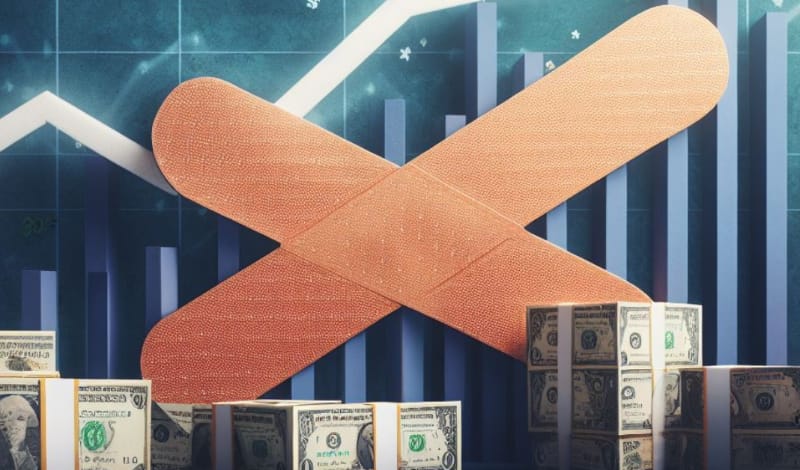Interest rates slow the “healing process” for reinsurance capital supply: Goldman Sachs

Analysts at investment bank Goldman Sachs say that, while the supply of capital to the global reinsurance market is generally healing, this process has likely been slowed somewhat by the recent further increase to US interest rates.
Goldman Sachs equity analyst team continue to have a favourable view of property catastrophe reinsurance and reinsurers, believing that they are set to deliver quite strong earnings for the past quarter and that the pricing environment is not likely to significantly change, as we move towards year-end renewals.
While the reinsurance capital supply is going through a “healing process”, so capital levels are improving and increasing, the analysts also believe that “demand for reinsurance is likely materially outpacing it.”
“With this dynamic still intact, we think reinsurance returns will be stronger than normal,” they explain.
All of which has a particularly positive read-across for the insurance-linked securities (ILS) space, both in terms of the expectation that rates remain elevated, while demand continues to build. Plus also, on the catastrophe bond side, the fact that demand may push additional new sponsors to look to the cat bond market for reinsurance and retrocession as well.
But, interest rates that are continuing to rise are set to be a factor in determining how quickly reinsurance capital can rebuild, and this could also moderate demand for ILS somewhat, among certain cohorts of investors it seems, while at the same time slowing the return of private capital to reinsurance start-ups and scale-ups as well.
When interest rates rise and returns improve across a wide-range of what are typically viewed as “safer” assets, the desire for some investors to look at asset classes like reinsurance can reduce somewhat, is the Goldman Sachs thesis here.
Of course, we need to remember that most insurance-linked securities (ILS), such as catastrophe bonds, provide their returns floating on top of the risk-free rate, making their relatively uncorrelated nature a particularly attractive alternative right now, given higher reinsurance and risk-free returns combine.
But, all of this can also be a further buoyancy aid for reinsurance pricing, as capital flows may not be a significant enough factor to dent or soften the market considerably, especially with the demand side still driving forwards.
Goldman Sachs analyst team state, “We note that the recent increase in US interest rates has likely further slowed the healing process for the supply of reinsurance capital, which further supports pricing rate on line remaining at multi-decade highs with incremental benefits from terms and conditions tightening.”
While the investment bank’s analyst team says that they do see “the potential for additional capital in the space,” they explain that, in terms of their thesis on the property catastrophe reinsurance space, “we stop short of the ‘diminishing return’ component for two reasons.”
The first reason is that, “Discipline in underwriting is here to stay in the near term as these companies have multiple years of BV (book value) restoration and earnings to recoup that takes more than one quarter.”
The second being, “There is still a significant supply/demand imbalance in the market and a more clear understanding of expectations by reinsurers on terms and conditions.”
The Goldman Sachs analysts note that the third-quarter does not provide as much visibility of the capital flow situation in reinsurance, given during the hurricane season the ILS market and cat bond investors generally hold back on deployments, waiting to see how the season plays out.
The analysts maintain a view that the biggest downside risk to the reinsurers that write property cat risks that they track, is a significant influx of new capital into the space, from either traditional or alternative capital sources.
However, reinsurers are as keen to sustain the higher return potential of their businesses, just as much as ILS managers are keen to sustain the improved performance of their funds.
The question arises over how much higher, than historical levels, the performance of reinsurance balance-sheets and ILS funds needs to be, so whether there is room for some softening, while still keeping capital providers happy.
For the industry though, controlling any softening or decline in rates to ensure it doesn’t become another competitive race to the bottom, as seen in the early 2010’s, will be critical going forwards.
Reinsurers were just as guilty of piling into US catastrophe reinsurance risks at increasingly lower pricing, leveraging their global diversification to compete hard against what was a fast growing ILS market at the time.
But, ILS capital providers did not hold back on competing as well, which drove the significant softening and also widening of terms and conditions that we saw.
While the industry remains determined not to return to those days of ultra soft rates and very broad terms, it remains to be seen whether the allure of too much capital, when it is offered, can be resisted this time around.
On the flip side of that, can the industry put too much capital to work productively to grow the market and provide more protection for the insurance industry, so enabling those wanting to deploy to the sector to do so without overly softening the market.
Time will tell.






